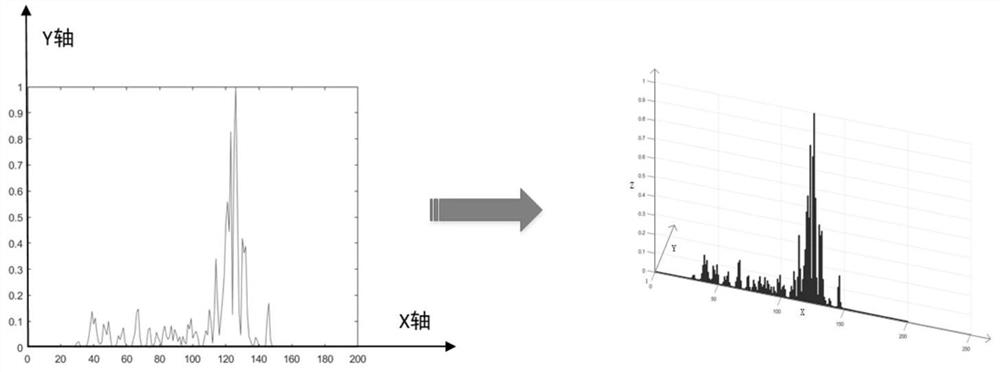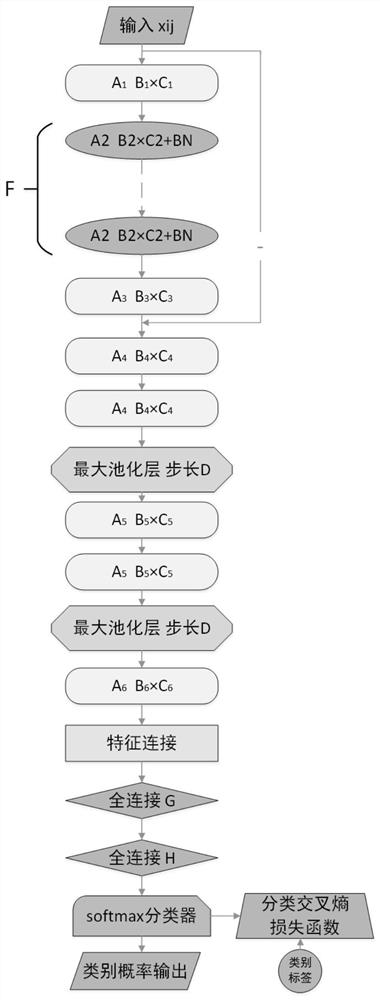Sea surface target one-dimensional range profile noise reduction convolutional neural network identification method
A technology of convolutional neural network and recognition method, which is applied in the field of one-dimensional range image noise reduction convolutional neural network recognition of sea surface targets, can solve the problem of low signal-to-noise ratio, and achieve strong versatility, enhanced robustness and intelligence level, the effect of reducing adverse effects
- Summary
- Abstract
- Description
- Claims
- Application Information
AI Technical Summary
Problems solved by technology
Method used
Image
Examples
Embodiment 1
[0064] The specific implementation of embodiment 1 is divided into the following steps:
[0065] Step A-1: First, let M=200, randomly generate the noise sequence NOISE, use the formula (2) to calculate the effective power PS of the noise-free HRRP, and use the formula (1) to estimate the noise under the condition of a given signal-to-noise ratio SNR The effective power PN, and the random noise sequence NOISE is normalized to the effective power, and then the normalized noise is superimposed on the noise-free HRRP to complete the noise addition process of the HRRP data. After that, noises with different SNRs were added according to the above steps, and each SNR was added 5 times to expand the data set by 5 times. Then, the HRRP data were translated in the direction of distance to expand the data set. Each time, 10 distance units were translated, and a total of 21 translations were performed. The data set before and after was enlarged by 105 times. Finally, the entire set of ...
Embodiment 2
[0076] The specific implementation of embodiment 2 is divided into the following steps:
[0077] First, referring to Step A-1 in Embodiment 1, perform preprocessing such as noise addition, expansion, and division on HRRP, and then implement according to the following Step B-2.
[0078] Step B-2: Use method 2.2 to convert the HRRP into a binary image of 0 or 1, and explore the structural feature information of the HRRP curve. First divide the entire HRRP image into small pixels, then set the pixel where the curve is located to 1, and the remaining blank pixels to 0, and finally convert the vertical axis of HRRP to the Y axis of the two-dimensional image, and the horizontal axis The axis is converted to the X axis of the two-dimensional image, and the image conversion of HRRP is completed. The conversion effect is as follows Figure 8 shown.
[0079] Then, with reference to step A-3 and step A-4 in Example 1, a deep learning network model integrating noise reduction and recogn...
PUM
 Login to View More
Login to View More Abstract
Description
Claims
Application Information
 Login to View More
Login to View More - R&D
- Intellectual Property
- Life Sciences
- Materials
- Tech Scout
- Unparalleled Data Quality
- Higher Quality Content
- 60% Fewer Hallucinations
Browse by: Latest US Patents, China's latest patents, Technical Efficacy Thesaurus, Application Domain, Technology Topic, Popular Technical Reports.
© 2025 PatSnap. All rights reserved.Legal|Privacy policy|Modern Slavery Act Transparency Statement|Sitemap|About US| Contact US: help@patsnap.com



